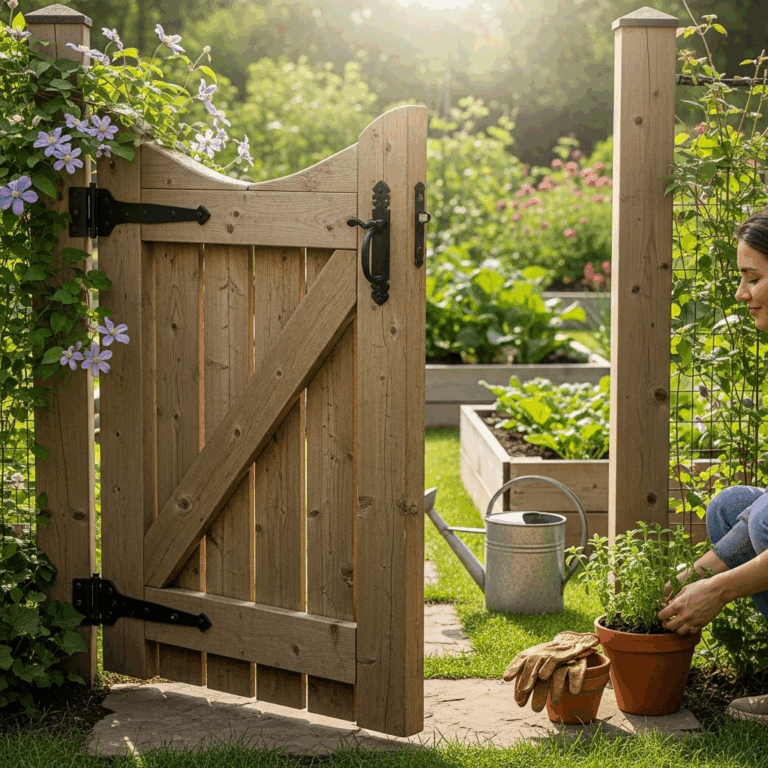The best way to cook a porterhouse steak indoors involves a reverse sear method, using a gentle oven bake followed by a high-heat finish, ensuring an evenly cooked interior and a perfect crust. This butcher’s secret guarantees restaurant-quality results right in your kitchen, even for beginners.
Have you ever stared at a beautiful, thick porterhouse steak and felt a pang of anxiety about cooking it perfectly indoors? You’re not alone! Getting that juicy, tender inside with a beautifully seared crust can feel like a culinary tightrope walk, especially without a backyard grill. Many home cooks struggle with unevenly cooked steaks, dry centers, or charred exteriors. But what if I told you there’s a fool-proof, genius method that makes cooking the perfect porterhouse indoors as easy as pie? Get ready to impress yourself and anyone lucky enough to be at your table. We’re diving into a simple yet incredibly effective technique that will have you saying goodbye to steakhouse bills forever.
Mastering the Porterhouse: Your Indoor Culinary Adventure
The porterhouse steak is a king among steaks. It’s essentially two steaks in one, boasting both the tender fillet mignon and the flavorful New York strip, separated by that iconic T-bone. Because of its substantial thickness, even cooking can be a challenge indoors. Traditional methods can lead to an overcooked exterior by the time the thick center reaches the desired temperature, or a raw, unappetizing middle if you’re too cautious. This is where the reverse sear method shines. It flips the script on conventional steak cooking, prioritizing a gentle, even cook before the final, crucial sear. This guarantees a steak that’s perfectly pink from edge to edge, with a mouthwatering, caramelized crust.
Why the Reverse Sear is Your Porterhouse’s Best Friend
The secret to the reverse sear lies in its name. Instead of searing first and then cooking, we reverse the process. We cook the steak slowly and gently in a low-temperature oven until it’s almost at your desired doneness. Then, and only then, do we give it a blast of high heat to create that irresistible crust. This method offers several advantages:
- Even Cooking: The slow oven cook allows the internal temperature to rise gradually and evenly throughout the steak, eliminating the dreaded gray band often found just beneath the surface of conventionally cooked steaks.
- Superior Temperature Control: It’s much easier to hit your target internal temperature—whether medium-rare, medium, or well-done—using the oven. You’re less likely to overshoot.
- Enhanced Flavor and Texture: The low-and-slow phase dries out the surface of the steak slightly, which helps it achieve a better, crispier sear when it hits the hot pan or broiler. This also leads to a more tender result.
- Less Stress: By separating the cooking and searing stages, you can relax a bit more. The steak is already mostly cooked before hitting the hot pan, reducing the pressure of overcooking.
Gathering Your Steakhouse-Ready Arsenal
Before we embark on this delicious journey, let’s make sure you have everything you need. The best part? You likely already own most of these items!
Essential Tools for Success:
- A Thick Porterhouse Steak: Aim for a steak that’s at least 1.5 inches thick. Thicker cuts benefit most from the reverse sear.
- Oven: Your trusty kitchen workhorse.
- Baking Sheet: For holding the steak in the oven.
- Wire Rack: Placed on the baking sheet, this allows air to circulate around the steak for more even cooking.
- Instant-Read Meat Thermometer: This is your most important tool for ensuring the perfect internal temperature. Don’t guess; use a thermometer! A reliable one like the MEATER (though many reliable brands exist) is a game-changer.
- Heavy-Bottomed Skillet: Cast iron is ideal for its excellent heat retention and even heating surface, which means a superior sear. Stainless steel is also a good option.
- Tongs: For safely flipping and moving the steak.
- Paper Towels: Essential for patting the steak dry.
- High Smoke Point Oil: Avocado oil, grapeseed oil, or canola oil work well.
- Butter, Garlic, and Herbs (Optional): For basting during the searing phase.
The Genius Method: Step-by-Step Guide to Perfect Porterhouse
Let’s get cooking! Follow these simple steps for a porterhouse steak so good, you’ll wonder why you ever hesitated.
Step 1: Prepare Your Steak
Take your porterhouse steak out of the refrigerator at least 45 minutes to an hour before cooking. This allows it to come closer to room temperature, which promotes more even cooking. Pat it thoroughly dry with paper towels. Moisture is the enemy of a good sear, so get it as dry as possible!
Season generously on all sides with coarse sea salt and freshly ground black pepper. Don’t be shy with the seasoning; a thick steak needs a good amount to absorb those flavors.
Step 2: The Gentle Oven Bake
Preheat your oven to a low temperature, ideally between 225°F and 275°F (107°C to 135°C). The lower the temperature, the more evenly the steak will cook, but it will take longer.
Place the seasoned steak on the wire rack set inside the baking sheet. This setup elevates the steak, allowing hot air to circulate around it, preventing it from steaming and ensuring a more uniform cook.
Insert an oven-safe meat thermometer probe into the thickest part of the steak, avoiding the bone. If you don’t have an oven-safe probe, you’ll check it manually later.
Step 3: Monitor the Internal Temperature
Place the baking sheet with the steak into the preheated oven. The cooking time will vary significantly based on the thickness of your steak and the oven temperature. This is where patience and your thermometer are key.
You are aiming for an internal temperature about 10-15°F below your desired final temperature. Here’s a general guide:
| Desired Final Doneness | Target Oven Temperature (Before Sear) | Approximate Oven Time (for 1.5-inch steak) |
|---|---|---|
| Rare | 115°F (46°C) | 45-60 minutes |
| Medium-Rare | 120°F (49°C) | 50-70 minutes |
| Medium | 130°F (54°C) | 60-80 minutes |
| Medium-Well | 135°F (57°C) | 70-90 minutes |
Note: These times are estimates. Always use your thermometer for accuracy.
Once the steak reaches your target internal temperature, carefully remove the baking sheet from the oven. If you used an oven-safe probe, you’ll know its temperature. If not, you can carefully remove the steak from the oven and check with your instant-read thermometer.
Step 4: The Crucial Sear
This is where the magic happens! Heat your heavy-bottomed skillet over high heat. Add a tablespoon of high smoke point oil to the pan; it should shimmer but not smoke excessively. You want the pan screaming hot.
Carefully place the oven-warmed steak into the hot skillet. You should hear a satisfying sizzle. Sear for about 60-90 seconds per side, using tongs to get into any nooks and crannies, especially around the bone, to ensure even browning.
For extra flavor, in the last minute of searing, you can add a tablespoon of butter, a crushed garlic clove, and a sprig of rosemary or thyme to the pan. Tilt the pan slightly and spoon the foaming, infused butter over the steak (this is basting).
Step 5: Rest and Serve
Once seared to perfection, immediately remove the steak from the skillet and place it on a clean cutting board or a warm plate. Tent it loosely with foil and let it rest for at least 5-10 minutes. Resting is absolutely critical; it allows the juices to redistribute throughout the meat, resulting in a more tender and flavorful steak.
After resting, slice against the grain, and admire your perfectly cooked porterhouse. Serve immediately and enjoy the fruits of your (not so) hard labor!
Tips for Garnishing and Serving
While a perfectly cooked porterhouse needs little embellishment, a few additions can elevate your experience:
- Compound Butter: A dollop of herb or garlic butter melting over the hot steak is classic.
- Pan Sauce: Deglaze the searing pan with a splash of red wine and some beef broth, add a knob of butter, and you have a quick, delicious sauce.
- Fresh Herbs: A sprinkle of fresh parsley or chives adds a burst of color and freshness.
- Side Dishes: Creamy mashed potatoes, roasted asparagus, or a fresh salad are perfect accompaniments.
A Word on Steak Thickness
As mentioned, the reverse sear technique is especially beneficial for thicker cuts of steak, generally anything 1.5 inches or more. For thinner steaks (under 1 inch), a traditional pan-sear from start to finish is usually sufficient.
When to Use Reverse Sear vs. Traditional Sear:
| Steak Thickness | Recommended Cooking Method | Why It Works |
|---|---|---|
| 1.5 inches + | Reverse Sear | Gentle oven cook ensures even internal doneness before high-heat sear; prevents overcooking the exterior. |
| 1 – 1.5 inches | Reverse Sear or Traditional Sear | Reverse sear offers more control for extremely even cooking. Traditional can work if monitored closely. |
| Under 1 inch | Traditional Pan-Sear | Cooks through quickly; reverse sear can overcook before the sear is achieved. |
For a porterhouse, which is almost always thick, the reverse sear is the undisputed champion for indoor cooking.
Frequently Asked Questions about Cooking Porterhouse Indoors
Q1: Can I use this method for other thick steaks?
Absolutely! The reverse sear is fantastic for any thick-cut steak like a ribeye, T-bone, thick sirloin, or filet mignon that’s 1.5 inches or thicker. It’s a versatile technique.
Q2: What if my steak is already at room temperature?
Great! If your steak has been out for a while and is close to room temperature, you can proceed directly to seasoning and then into the oven. Just be mindful of the oven cooking time, as it might be slightly shorter.
Q3: My steak still seems a bit rare after searing. What should I do?
No problem! If the steak isn’t quite at your desired doneness after resting, you can always briefly return it to the hot skillet for another 30 seconds to a minute per side. Just be careful not to overcook it.
Q4: Is it important to rest the steak?
Yes, resting is crucial! It allows the muscle fibers to relax and reabsorb the juices. Skipping this step will result in all those delicious juices running out onto your cutting board, leaving you with a dry steak. Think of it as the final, essential step for optimal flavor and tenderness.
Q5: What’s the best way to check for doneness without a thermometer?
While a thermometer is highly recommended for accuracy, experienced cooks sometimes use the “touch test.” By comparing the firmness of the steak to the firmness of the fleshy part of your thumb when touching different fingers, you can estimate doneness. However, for beginners and for a premium cut like porterhouse, an instant-read thermometer provides foolproof results and is well worth the investment.
Q6: Can I use my broiler instead of a skillet for the sear?
Yes, you can! After the oven bake, place the steak on a wire rack attached to a baking sheet and broil on high for 1-3 minutes per side, watching very closely to prevent burning. Ensure your broiler is on its highest setting, and your oven rack is positioned a few inches from the heat source. The skillet method often provides a more controllable and crispier crust.
Conclusion: Your Indoor Steakhouse Awaits
There you have it! The reverse sear method is your secret weapon to achieving restaurant-quality porterhouse steaks right in your own kitchen. By gently coaxing the steak to temperature in the oven before a quick, high-heat sear, you ensure unparalleled evenness, tenderness, and a perfect crust every single time. Don’t let the size or reputation of the porterhouse intimidate you; this method breaks it down into manageable, foolproof steps. So, gather your ingredients, trust your thermometer, and get ready to enjoy what might just be the best steak you’ve ever cooked at home. Happy cooking!


